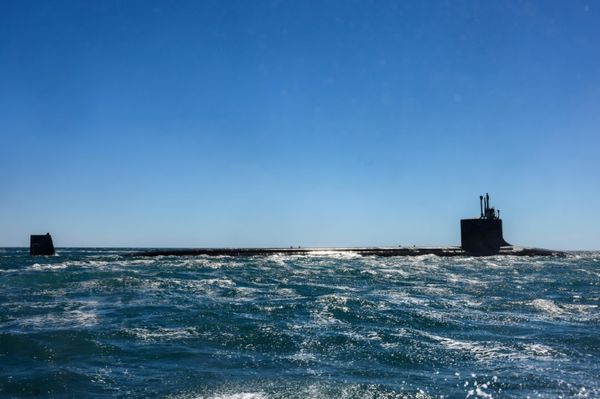
Extreme heat and wildfire smoke can individually pose health risks, but a recent study suggests that when combined, their impact on the human body becomes even more dangerous. Published in the journal Science Advances, the study highlights how climate change is exacerbating both hazards, particularly in California. The research reveals that the combined harm of extreme heat and inhaling wildfire smoke leads to increased hospitalizations, disproportionately affecting low-income communities and marginalized racial and ethnic groups.
The reasons for this disproportionate impact are multifaceted and complex, as outlined by the authors from the Scripps Institution of Oceanography at the University of California, San Diego and the UCLA Fielding School of Public Health. Structural racism, discriminatory practices, lack of medical insurance, less understanding of the health implications, and a higher prevalence of multiple underlying health conditions contribute to these disparities.
Additionally, the infrastructure, surrounding environment, and available resources play a role in determining the level of vulnerability to these combined hazards. Homes and workplaces with air conditioning, neighborhoods with ample tree canopy cover, and buildings that filter smoke from wildfires provide better protection against extreme heat. Areas with access to cooling centers, such as libraries, also offer additional safeguards.
Tarik Benmarhnia, a study author and climate change epidemiologist at UC San Diego, emphasizes that even individuals who are highly susceptible to the health impacts of extreme heat and wildfire smoke can mitigate their risks if they have access to social services and amenities. However, those living in remote areas with limited resources may face more significant challenges and experience higher rates of hospitalizations and emergency room visits.
Experts caution that as climate change continues to worsen extreme weather events, such as heat waves and wildfires, the frequency and intensity of these hazards occurring simultaneously will increase. While the study focused on California, similar patterns are likely to be found in other parts of the western United States, including Oregon and Washington state, as well as regions with Mediterranean climates, such as parts of Canada.
To conduct their research, the scientists analyzed health records from nearly 1,000 ZIP codes covering most of California's population, focusing on episodes of extreme heat and toxic air from wildfires between 2006 and 2019. They discovered a 7% increase in hospitalizations for cardiorespiratory issues on days when both conditions were present. Moreover, these hospitalizations were even higher in ZIP codes with higher rates of poverty, nonwhite populations, dense living conditions, and lack of access to healthcare.
Certain regions in California, such as the Central Valley agricultural area and the state's northern mountains, experience a higher incidence of both extreme heat and wildfires, primarily driven by increased forest fires in the surrounding mountains. Residents in the Central Valley are particularly vulnerable due to their outdoor work and increased exposure to environmental hazards, such as pesticides.
In addition to the immediate health risks, hospitalizations have severe consequences, including lost work or school hours and hefty medical bills. During extremely hot days, the human body struggles to cool itself through sweating, leading to dehydration. This, in turn, forces the heart to beat faster, resulting in elevated blood pressure, which can be dangerous, especially for individuals with cardiovascular diseases or dehydration.
When it comes to smoke inhalation from wildfires, particles can easily enter the respiratory system and even the bloodstream, causing inflammation and exacerbating cardiovascular regulation issues. This creates a snowball effect, increasing the risk of heart attacks and other long-term health problems.
A 2022 study conducted by the University of Southern California found that the risk of death significantly increased on days when extreme heat and air pollution coincided. During heatwaves, the likelihood of death rose by 6.1%, while extreme air pollution increased the risk by 5%. However, when both occurred simultaneously, the threat skyrocketed to 21%.
Dr. Catharina Giudice, an emergency physician and fellow at the Harvard T.H. Chan School of Public Health, who was not involved in the study, has observed an uptick in emergency room visits from patients with various health conditions on extremely hot days. Similarly, during wildfire events, more individuals with exacerbated respiratory diseases, such as asthma, sought medical care. Dr. Giudice emphasizes the heightened vulnerability of low-income and minority communities to the effects of climate change.
The study's authors suggest that issuing joint warnings for extreme heat and toxic air earlier, rather than separate advisories from agencies like the National Weather Service and local air quality districts, could be beneficial in addressing the compound exposure and protecting vulnerable communities.
As the frequency and intensity of extreme heat and wildfires continue to increase under the influence of climate change, it is crucial to prioritize the needs of marginalized communities and implement comprehensive strategies to mitigate the health risks associated with these combined hazards. Furthermore, addressing the underlying structural and societal factors that contribute to these disparities will be essential in achieving health equity in the face of a changing climate.







